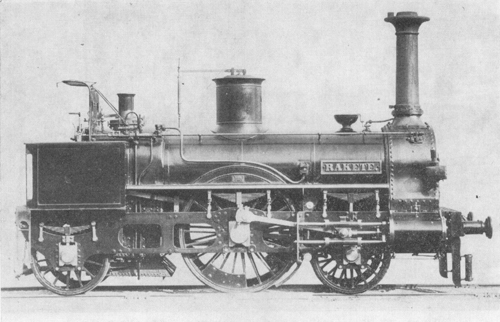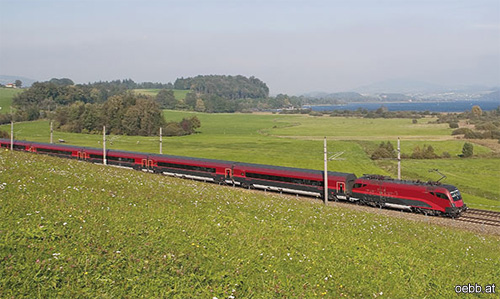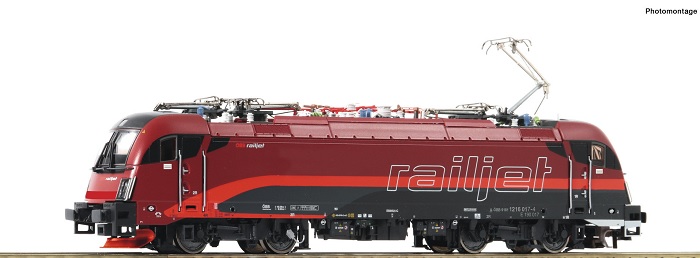

 STUART JORDAN looks at the development of railways in Austria.
STUART JORDAN looks at the development of railways in Austria.
The story of Austrian railways begins as far back as 1495. A funicular railway was built to serve Hohensalzburg Castle, and is thought to be the oldest still operating in the world. Although originally winched by man- or animal-power, it has since been completely motorised.

Rakett (Rocket), an early locomotive on the KFNB
In 1837 the Kaiser Ferdinands-Nordbahn (Emperor Ferdinand Northern Railway) was opened, with a line running from Floridsdorf to Deutsch Wagram – reaching Vienna in 1838. This was only the second steam railway on continental Europe, after Belgium, and the Nordbahn eventually expanded to run lines across modern Austria, Czech Republic, and Poland.
In 1867 the Austrian Empire combined with the Kingdom of Hungary to form the Austro-Hungarian Empire. The Vienna Stock Market Crash in 1873 lead to several smaller Austrian Railway companies failing, with the state taking them over. With pressure from ministers for greater state control of the railways, the Kaiserlich-Koniglich Staatsbahn or kkStB (Imperial-Royal State Railways) was formed.
Under state control railways expanded across the empire, nationalising and absorbing other companies including the Nordbahn in 1906. By 1914, 82% of the 22,981km of Austrian railways were run by the kkStB.
At the end of World War I the Austro-Hungarian Empire was broken up, and various lines became parts of the state railways in their constituent countries: Poland, Czechoslovakia, Yugoslavia, Italy, and Romania.
In 1918 the Austrian rail network was brought under state control, going through several name changes: 1918 - Deutschosterreichisch Staatsbahn (DOStB), then in 1919 Österreichisch Staatsbahn (ÖstB), and in 1923 Bundesbahn Österreich (BBÖ), which the network was formed into a commercial venture and merged completely with the Sudbahn, the only railway that had remained in private hands after the war.
In 1938 the Anschluss saw Austria absorbed into the German Empire. The Austrian railway network fell under the control of the Deutsche Reichsbahn. During World War II around 40% of the network was destroyed by Allied forces.
Post-war, the railways were reformed into the state-owned Österreichisch Bundesbahnen (ÖBB) in 1947. The lines were rebuilt and electrified, with 72% of the network electric by 2013. The infrastructure of the ÖBB is now maintained by ÖBB-Infrastructur AG, the Austrian equivalent to Network Rail in the UK. Owning transportation assets across Austria, nearly half of the passengers carried by ÖBB are on their bus network.

Railjet High Speed Service
The Austrian railway network connects to neighbouring countries – Czech Republic, Hungary, Italy, Liechtenstein, Slovakia, Slovenia, Switzerland, and Germany – which includes ICE high speed services.

The Austrian ICE Network, showing connections to Germany

Roco Railjet Electric Locomotive VI
ÖBB Railjet Coaches, Railjet is the Austrian high speed network (which also runs outside of Austria), can be bought in sets. Many companies produce Austrian Locomotives, Coaches, and Wagons in various scales.
ICE trains and stock are also available from most continental suppliers.
There is a good choice of Austrian figures to choose from.